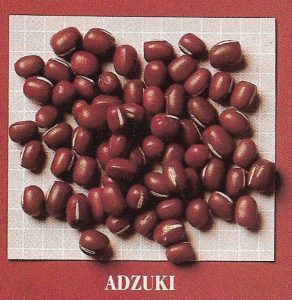THE JOY OF CARBOHYDRATES: BEANS!
Are you kidding me?! A bean tasting of cooked dried seeds?
Can food associates, (especially in Latin America), worldwide with hearty appetites be worthy of such an earnest consideration?
To clear the palate between varieties does one clear it with water or nibble on bread?
Neither one really. Just gather a bunch of folks or participants, cook a variety of colorful beans in different styles and methods, and then discover why beans are the essential ingredient in the most popular dishes in homes and restaurants in so many cultures around the globe.
There are about 15,000 species of Leguminosae, the huge group to which all beans, peas, and lentils have a membership to. I personally have only tasted maybe a dozen of varieties myself: the black bean, (of which I included some recipes of mine on my website) I tried adzuki beans, the ovals much admired by the macrobiotic aficionados; black-eyed peas, I got introduced to that one in Bermuda where they make mean rice with black-eyed peas, and is a favorite in the south; black beans, the ebony-colored rounds, the large and small favas, a Middle Eastern staple; the garbanzos, also called chickpeas, a West Indian favorite, the Great Northern whites, the American answer to French Haricots and Italian cannellini. the navy or pea beans, the star attraction in the Boston Baked Beans pot. Then there are the pink beans, much used in the cooking of Puerto Rico, and of course the pinto beans, a basic of Mexican cuisine. Let’s not forget the small white beans, the key ingredient of a fantastic Italian Pasta e Fagioli soup.![]()
Longevity
Beans do not last forever. After about a year on the shelf, they lose much of their flavor and take longer to cook.
The Winner
The winner in terms of full-bodied satisfying flavor was, surprisingly to some of us, the pale ochre-colored soybean. It is undoubtedly the strongest-tasting bean of the varieties sampled. Properly cooked, the soy bean’s grain is so closely knit that its texture is just like that of butter.
Only the hardiest of them -the garbanzos, soy, and favas – have enough individuality to transcend other flavors.
Nutritious
Beans are nutritious, too. All except soy are low in fat, virtually cholesterol-free, and contain varying amounts of vitamins, iron, and minerals. They are an amazingly inexpensive source of protein, which, albeit incomplete, can easily be made whole by serving the beans with a complimentary whole-grain dish or small quantities of full-protein foods such as meat, eggs, or cheese.
The Negative Part
Perhaps, then, their only drawbacks are that they take hours to prepare and cook and are by reputation, a tad unglamorous.
Here are some Tips for Cooking Beans
°Always use fresh water to cook beans, Discard the soaking water, which contains water-soluble oligosaccharides, the gas-producing villains.
°Do does not add acidic ingredients- such as lemon juice, vinegar, or tomatoes- until the beans are already tender, or the cooking time will be lengthened and the beans will remain tough.
°Always keep beans covered with liquid as they cook but do not add any more than necessary or they can become water-logged and their flavor will diminish.
Recent Posts
Ulrich’s GAProductions
The Dinosaur Eye – Wall Art
Get your Wall Picture here Read More
Hot Chocolates Restaurant and Nite Club
All your Traveling needs here at Amazon Read More
My Cosmopolitan Magazine modeling Days😁
Ulrich’s Miami Mob ordeal Read More
Ulrich’s Hot Chocolates, Fort Lauderdale, Florida, 1997 – 2001
Hike to Lake Tremorgio, Ticino, Switzerland
Daniel Humm is revolutionizing 3-Star Cuisine
This is how the first vegan menu tastes in “Eleven Madison Park” in New York... Read More
Swiss Travel Soothing Music Video
Ulrich’s Guadalajara & Mexico City Experience
Chef Ulrich in Action in Guadalajara, Mexico My first visit to Mexico was with my... Read More
Chef UlrichK on Selkirk CH.13 Cooking Show
My awkward Brandy bottle pop! The video is 16 min. long – Video is 37... Read More
Ulrich in the Dominican Republic
In 1987 I arrived in Santo Domingo to work on the re-opening of the new... Read More
Ulrich’s Miami Mob ordeal
As a Swiss chef, I took the opportunity to go and see the world, that... Read More
Exciting Swiss Family Koepf Hike to 2300 m
The Bristen (3073m) is a mountain in the Canton of Uri, Central Switzerland. ... Read More
Around Monte Baldo, Italy
On my recent visit to Verona, I came across these amazing places; situated in the... Read More
Subscribe here
Click here to Subscribe Read More
Aquaria, Thermal Waters of Sirmione
The Uniquelness of our Thermal Water Click here to visit the website The... Read More
In a MOOD for Sushi?
I am not a fan of raw fish, I like my fish cooked, especially knowing... Read More
